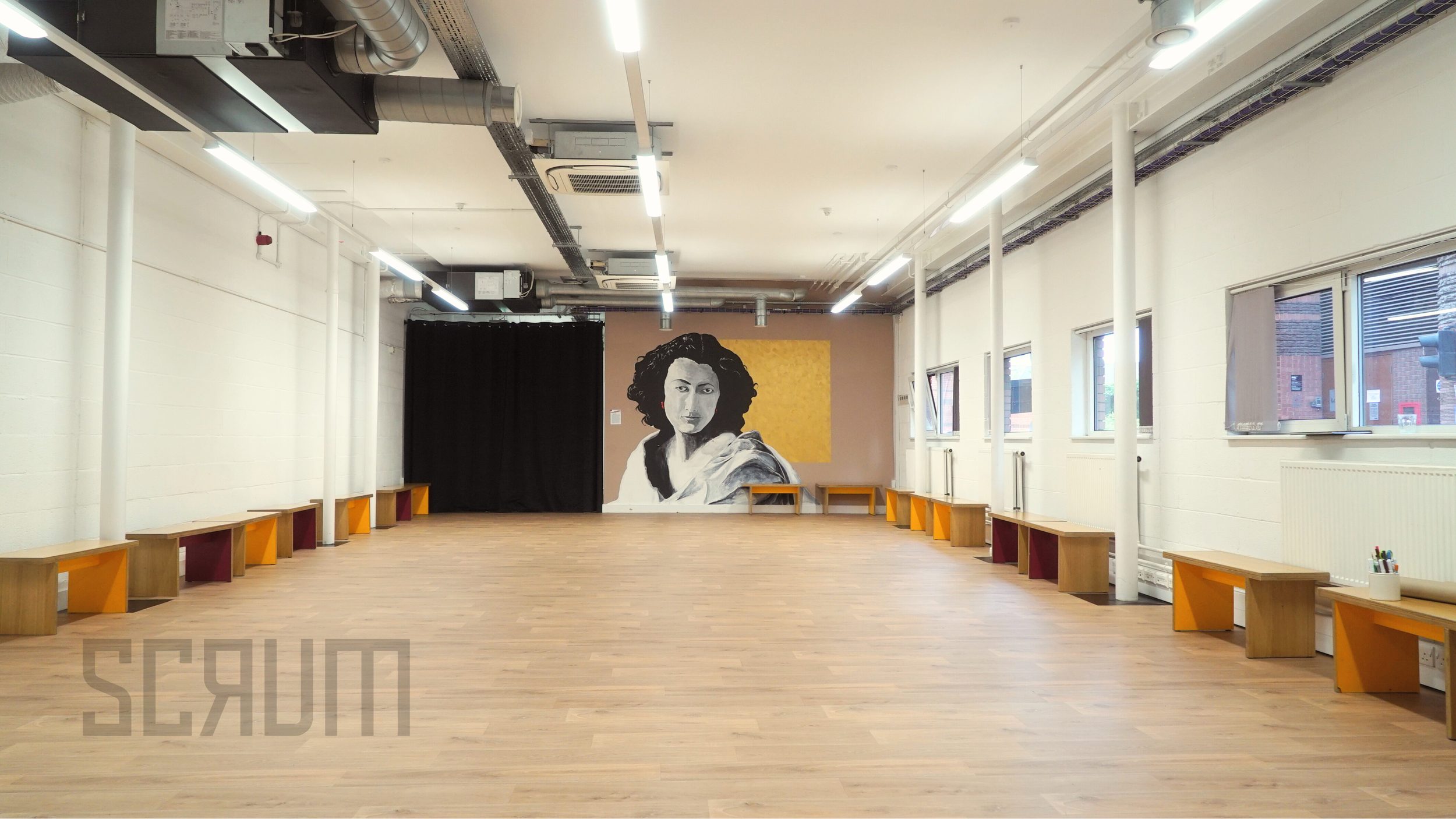
Studio Sarah
Studio Sarah is an all-inclusive suite, comprised of a spacious studio, exclusive kitchen, wheelchair accessible toilets and two breakout rooms. Step-free accessible.

Studio Sarah (photo: SCRUM Studios)

Studio Sarah - Breakout Room (photo: SCRUM Studios)

Studio Sarah - Kitchen (photo: SCRUM Studios)

Studio Sarah - Quiet Room (photo: SCRUM Studios)

Studio Sarah - Breakout Space (photo: SCRUM Studios)
Information
Dimensions
98m² studio, plus kitchen and breakout spaces
Rate (Standard / Reduced)
Per day £353.00 / £282.00
Per hour* £53.00 / £42.50
*Minimum booking time is 4 hours
Features
Exclusive kitchen
Wheelchair accessible toilets
On-site parking and secure overnight storage
A breakout room
A Quiet Room with ensuite toilet
Equipped with an upright piano, benches and WiFi
Vinyl flooring in the studio area
Plenty of natural light
Ideal for
Mid-to-large company rehearsals
Classes, workshops, schools groups, staff training groups
Musical and band rehearsals
Rehearsals with large props or set (with permission granted by SCRUM)
Filming
Dance and movement workshops*
*Please note: the floors are vinyl and unsprung; we do not currently provide floor-to-ceiling mirrors
Access Information
Step-free studio and facilities
Quiet Room
x3 wheelchair accessible toilets
Door width into Studio Sarah: 90cm
Please note: hirers of Studio Sarah must agree to permit users of the Warehouse with accessibility needs to use the accessible toilets within Studio Sarah unit, as these are the only ground-floor toilets in the building.
Studio Hero
Our rehearsal studios are named in honour of people we consider heroes from theatre history. Each studio features a mural of the hero its named after, painted by Will Dawkins.
Studio Sarah is named after the woman once described as ‘the greatest actress in the world’, Sarah Bernhardt (1844-1923).
-
(1844-1923)
One night, at the climax of a production of La Tosca, the woman celebrated as ‘the greatest actress in the world’ threw herself from the parapet of Sant’Angelo prison, but there was no mattress beneath to break her fall. Sarah Bernhardt’s right knee never recovered. For the next nine years Bernhardt lived and worked with chronic pain until, by 1915, it became so agonizing that she resolved to have the leg amputated. Reassuring admirers that it wouldn’t halt her career, she insisted, ‘In case of necessity, I shall have myself strapped to the furniture.’ And she did.
Dissatisfied with the prosthetic technology of the time, Bernhardt devised several alternatives, most notably a sumptuous white sedan chair which stagehands would use to carry her on and off the stage. Each theatrical production, film, and tour she would then embark on, including a tour of the front line to entertain the French troops, placed Bernhardt’s access requirements and autonomy at its centre.

